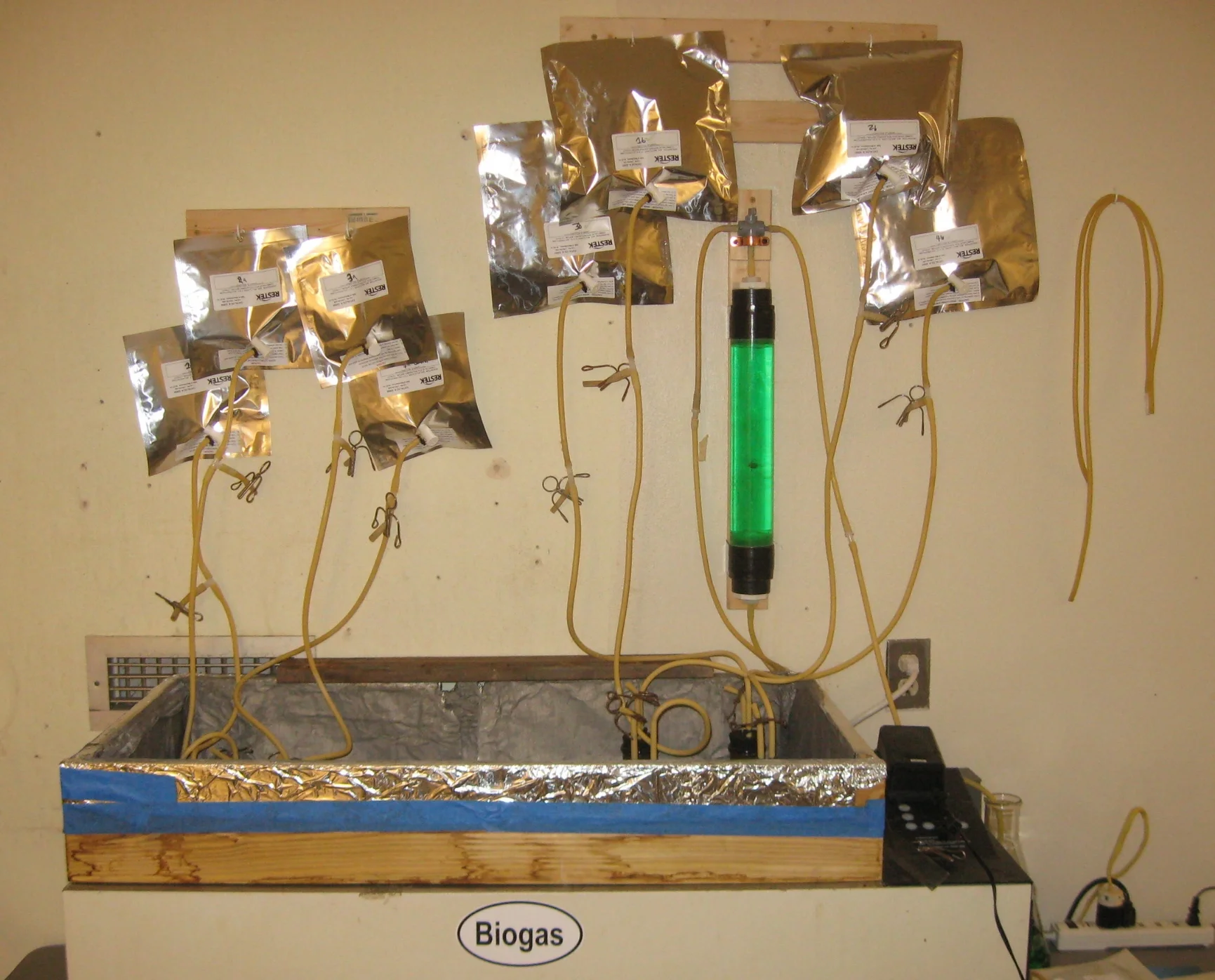Biogas!
The good ol’ days. Just not for accurate measurements of potential biogas production.
Bet you can’t guess what I’m going to talk about here…
The wild and wonderful world of turning rotting organic shite into fuel!
10/05/2018 , 18:24
Eventually I’ll get around to organizing some information and photos on here, but for now a quick synopsis of what I am currently working on:
Recently got involved with colleagues and students working on the NEXUS Project (http://ok.tec.appstate.edu/biomass/). The goal of this intended project is (in its current stage) to design an affordable, sustainable source of greenhouse heating for cold weather climates. We have a relatively short growing season here in western NC, and greenhouses are a useful tool for farmers to extend the season. This system relies heavily on a gasification system which provides the primary source of heating, but also included are: solar thermal, compost, and anaerobic digestion.
One of the areas of interest is exploring co-digestion of various agricultural by-products (it ain’t waste if you use it!). Specifically, there is interest in utilizing some of the biochar made on site via the gasification system as a way to hopefully improve biogas yields, as some literature has shown (https://phys.org/news/2018-01-biochar-benefit-anaerobic-digestion-animal.html) In addition, there is interest in exploring the optimal mix of goat manure and by-products from goat dairy production, specifically the whey.
So this is where I come in. Bench-scale biogas experimentation was my focus in graduate school, and I worked with what I had. One day I’ll post about the cobbled-together system I designed, but let’s just say, it was…unique. Certainly an example of “Appropriate Technology” and working with what you’ve got. That said, I dreamed of one day having access to an actual lab, to actual lab equipment, to a system that I knew could give me precise measurements and accurate results. I even spent three years applying and reapplying for grant funding in order to get that going. It never panned out. And then…
The NEXUS folks were awarded grant money, some of which was earmarked for laboratory improvements and new (real) analytic equipment! When I first entered the bioenergy lab this semester, the place where I spent countless hours as I worked my way through the thesis process, I was in awe. Seriously. I almost shed a tear. And now I’m tasked with doing much of the lab management work. It’s like a forgotten dream come true.
Alright. So. What I’ve been doing recently is installing and commissioning some of our new pieces of equipment. In particular our new benchtop biomethane potential test system. The system enables us to run 15 500ml digesters simultaneously (5 triplicates, generally), and logs real-time gas production volume, the source of my biggest headache during my thesis research. The second key piece of equipment that the lab lacked was a fume hood. This week I was able to not only successfully install the filter components and make of the the needed connections, I also got the system commissioned and operating. Yeah, I’m kinda tooting my own horn here, I was pretty pleased with myself.
I’ll throw some lab pictures up here in the coming days. The next steps are to begin characterizing our feedstocks: manures, whey, biochar, innoculum (the “seed” community of anaerobic archea which kick starts the digestion process.) By “characterizing” I mean determining the Total Solids (%TS) and Volatile Solids (%VS). TS tests determine water content of the sample, or rather what’s left when the water has been evaporated off. VS measures the total amount of “edible” organics in the sample, i.e. what % of the sample will be digested and converted to biogas. Once that’s complete, I’ll do a calibration run to test out the system using cellulose, and in order to get used to the software.
I guess this was not such a quick synopsis.
I guess get used to some long-form writing here.
